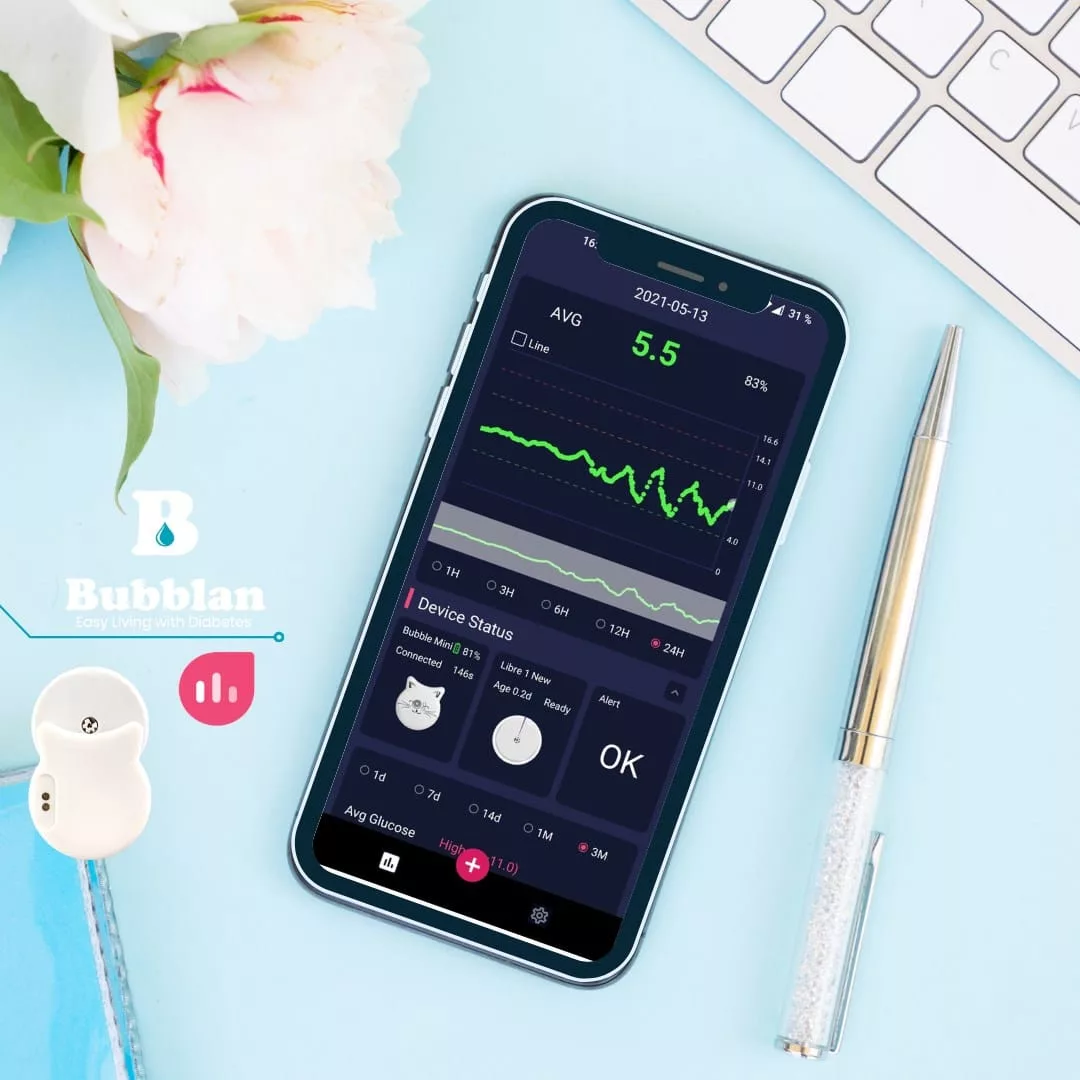Hypoglycemia is common in people with type 1 diabetes (T1D). In fact, most people with T1D experience at least 1 or 2 episodes of mild hypoglycemia a week. This is because in T1D, your pancreas doesn’t make insulin, which is the hormone your body needs to make energy from food, so you need to take insulin to manage your blood sugar. If the amount of insulin you take doesn’t match the amount your body needs, you could end up with too much insulin in your system. This leads to low blood sugar. In people without diabetes, their pancreas can “shut off” insulin production very quickly, but if you have T1D, you cannot “shut off” the insulin you just injected.
For people without diabetes, a typical blood sugar range is 70 to 140 mg/dL. The goal for people with diabetes is to spend as much time as possible in the target range of 70 to 180 mg/dL. The more time you spend in this range, the less likely you are to develop complications from diabetes. A blood sugar of 70 mg/dL or lower is usually considered hypoglycemia.
How to Recognize Hypoglycemia
The first signs of hypoglycemia include feeling sweaty, shaky, and hungry. However, not everyone has these symptoms or notices them in time to prevent low blood sugar from getting worse. It’s also important to know that your symptoms of hypoglycemia will change the longer you have T1D.
As hypoglycemia gets worse, symptoms can include:
- Feeling weak
- Having difficulty walking or seeing clearly
- Acting strange or getting disoriented
- Having seizures
Severe hypoglycemia may make you faint or pass out. This is dangerous if you are driving, climbing stairs, or doing other activities where you need to stay aware of things around you.
Hypoglycemia can happen at night. If it does, you are likely to wake up, but it’s important not to rely on your body to wake you up. A continuous glucose monitor, or CGM, can alert you and those around you with an alarm to let you know if your blood sugar starts getting low while you are sleeping.
It’s a good idea to check your blood sugar often when lows are likely, such as in hot weather or when you travel. Your CGM can also let you know when your blood sugar is getting lower.
Treating Mild to Moderate Hypoglycemia
If you start feeling any of the symptoms listed above, check your blood sugar as soon as possible, then follow the chart below to treat low blood sugar. If you have any concerns, or can’t test immediately, it’s best to treat first and check when possible.
If your blood sugar is…
51 to 70 mg/dL (3-4 mmol/L)
Eat this:
10 to 15 grams of fast-acting carbs, such as 4 ounces of fruit juice, 6 to 8 hard candies, or 3 to 4 glucose tablets.
What to do next:
Test your blood sugar again in 15 minutes. Repeat the treatment if necessary.
If your blood sugar is…
Under 50 mg/dL (3 mmol/L)
Eat this:
Eat 20 to 30 grams of fast-acting carbs, such as 8 ounces of fruit juice, 12 to 16 hard candies, or 6 to 8 glucose tablets.
What to do next:
Test your blood sugar again in 15 minutes. Repeat the treatment if necessary.
After Hypoglycemia
After you treat your hypoglycemia and your blood sugar is back in its normal range, you may return to normal activities. If you needed glucagon, you should call your doctor. They need to know you had a severe low. They might also want to change your diabetes plan to avoid more severe lows or discuss using an insulin pump with a CGM to improve control of your blood sugar levels. CGM devices are extremely useful for avoiding and detecting hypoglycemia.
After a low blood sugar episode, you are less sensitive to the early symptoms of hypoglycemia for 48 to 72 hours. This makes you more likely to have another episode. Check your blood sugar regularly, especially before eating, exercising, or driving a car.
Text fragment from JDRF
How can Bubble mini help treat hypoglycemia?
Bubble mini is a device that works with FreeStyle Libre 1, 2, and US 14 days
Bubble mini will generate alarms when your blood sugar levels changes
You can see through colors and special arrows the trendings of blood sugar in real-time
With follower mode, parents can keep an eye on their child when they are away
If you are sleeping, you will wake up thanks to the sounds emitted from DiaBox app
Bubble mini gets readings every 5 minutes of your blood sugar, so you can treat the episodes in time


Leave a Reply